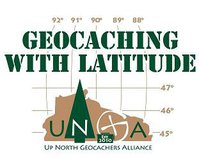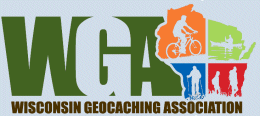Earthcache – Wetlands Molded by Ice
The following paragraph is from the Auto Tour Booklet for this stop: The immense glacial ice sheet that covered this region molded the wetland sanctuaries in the Moquah Barrens. These wetlands, sometimes very small in size, support a variety of wildlife and fish species and act as nurseries for small aquatic insects and amphibians. Take a few moments to visit this picturesque area. As you enter the towering pines, you will see an upland bog to your left, with its thick mat of sphagnum moss covering the surface. It is a stark contrast to the lake at the bottom of the hill. Eventually, this clear, open lake will evolve into a bog thousands of years from now. (Source: Moquah Barrens Auto Tour, USDA Forest Service Publication [out of print and the auto tour is currently not available])
The Moquah Barrens lies near the east end of an extensive outwash sand plain in northwestern Wisconsin, often referred to as Northwest Sands as well as the Moquah Barrens.

An outwash plain, or sandur (plural: sandurs[1] or sandar[2]), is a plain formed of glacial sediments deposited by meltwater outwash at the terminus of a glacier. An outwash plain might contain surficial braided stream complexes that rework the original deposits. They may also contain kettle lakes, locations where blocks of ice have melted, leaving a depression that fills with water. The flow pattern of glacial rivers across sandar is typically diffuse and unchannelized, but in situations where the glacial snout has retreated from the terminal moraine, the flow is more channelized. Source: http://en.wikipedia.org/wiki/Outwash_plain

This area of the Moquah Barrens displays 3 distinctly different kettles of the outwash sand plain. To claim this cache, you will visit the 3 coordinates for these kettles and answer the following questions to get credit for this earthcache:



Begin at the Earthcache coordinates, record the elevation and then proceed to steps 1-4.
1. At the Large kettle: Record the Elevation at the water’s edge. (be careful as this is a steep decent). Describe this large kettle and how does it differ from the other two. Consider size, shape, depth, amount of water, vegetation, etc.
2. At the Small Kettle: Record the Elevation at the water’s edge. (this is a moderate decent) . Describe this small kettle and how does it differ from the other two. Consider size, shape, depth, amount of water, vegetation, etc
3. At the Bog Kettle: Take the Elevation at the edge of the depression. Describe this kettle and how does it differ from the other two. Consider size, shape, depth, amount of water, vegetation, etc
4. Using the recorded elevation readings beginning at the Earthcache coordinates minus the elevation reading at each kettle, how deep are each of these depressions from the top to the water or kettle’s edge? Using your best estimation skills and the depths of the kettle’s edges, from top to bottom, how tall do you think the chucks of ice were that “molded these wetlands?” Consider in your answer the depth of the water in the kettles and perhaps how “icebergs may appear as they float?” What does their elevation at the water or kettle’s edge tell you about their position in the glacial outwash sands? High, middle, or low?
Pictures are welcomed, but not a requirement to claim this earthcache. Thanks for visiting this unique area.
Like to cache in northern Wisconsin? We do!

This cache placed by a member of U.N.G.A.
This cache placed by a member of:

(click to visit our website)
This cache follows the U.S. Forest Service Chequamegon-Nicolet Geocaching Policy per 11 April 2007.